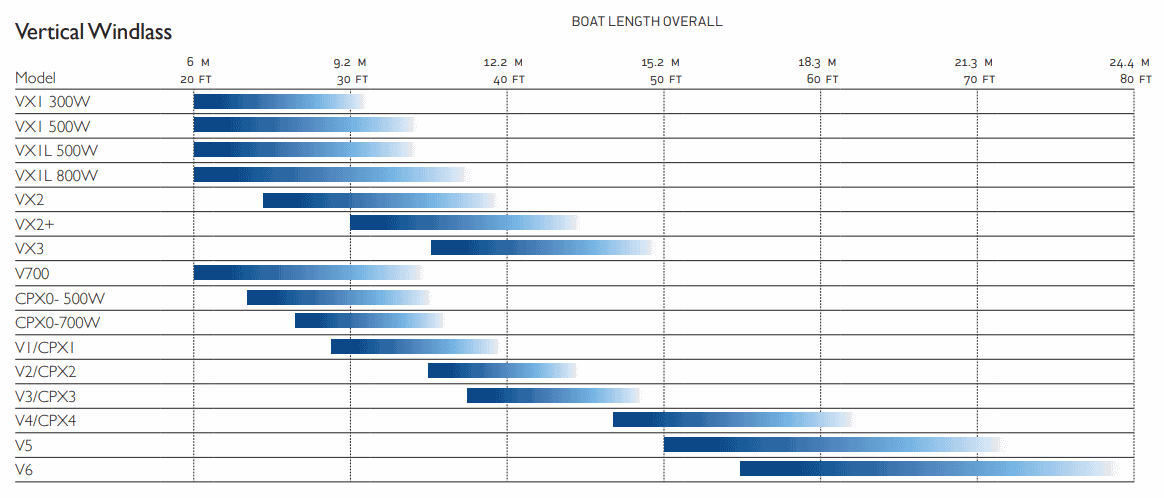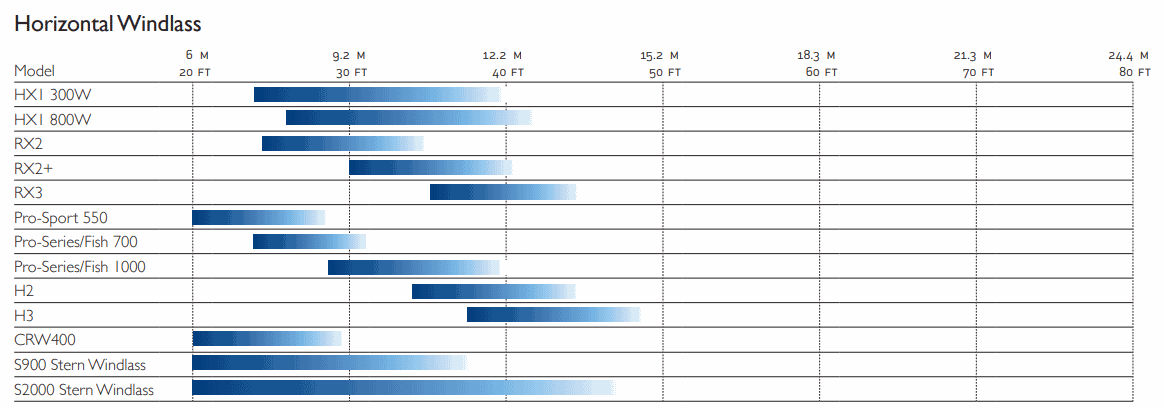Lewmar Windlass Size Guide


Many parameters have to be taken into account when selecting a windlass, such as displacement, windage, anchor weight etc. In the above chart the boat length corresponds to a vessel with average displacement. If your vessel is of heavy displacement, please consider using a larger windlass model. Lighter shading represents the upper limit of the model. If in doubt, move up a model.
Examine the depth of the anchor locker to determine the fall that is available. The fall is the vertical distance between the top of the anchor locker and the top of the anchor rode when the entire rode is completely stored inside. The windlass is a retrieval device. The windlass retrieves the anchor and rode. The windlass does not stow the rode inside the anchor locker; gravity stows the rode.
You must know how much rode will fit into your locker by gravity. There has to be a free and clear area under the hawse pipe for the incoming rode. Otherwise, you will have to comb the rode back, keeping a clear and free space under the hawse pipe while retrieving the anchor.
A windlass is not a high-load bearing device. When at anchor your rode should be secured to a chain stopper, a cleat or other mooring point on the bow.
Having selected a vertical or horizontal windlass and determined the size required using the chart on page 7, you can cross-check by using the following formula:
Total weight of ground tackle (anchor and rode) x 4 = Pulling power required by the windlass
Use x4 for all Horizontal windlass and Vertical windlass up to V5
Use x2 for V6 Vertical Windlass and above
Working Load, designed to allow prolonged anchor laying and retrieving. Please note this is an indication only. If in doubt please contact your Lewmar representative.













